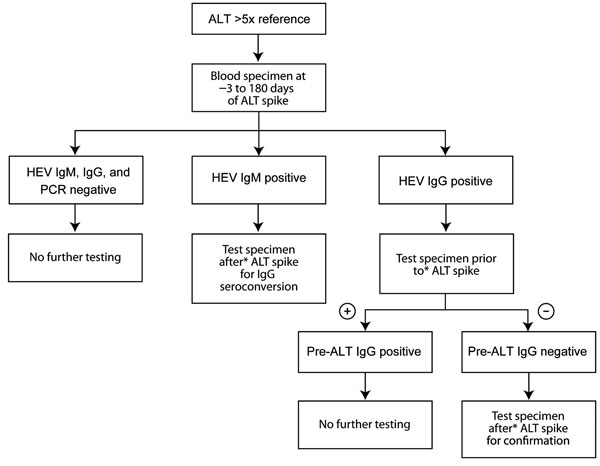Volume 18, Number 3—March 2012
Dispatch
Hepatitis E Virus Infection in HIV-infected Persons
Figure 1

Figure 1. Testing strategy for acute hepatitis E virus (HEV) infection among US military beneficiaries who had had increased alanine aminotransferase (ALT) levels during 1985–2009. +, positive; –, negative.
1Members are listed at the end of this article.
Page created: February 16, 2012
Page updated: February 16, 2012
Page reviewed: February 16, 2012
The conclusions, findings, and opinions expressed by authors contributing to this journal do not necessarily reflect the official position of the U.S. Department of Health and Human Services, the Public Health Service, the Centers for Disease Control and Prevention, or the authors' affiliated institutions. Use of trade names is for identification only and does not imply endorsement by any of the groups named above.